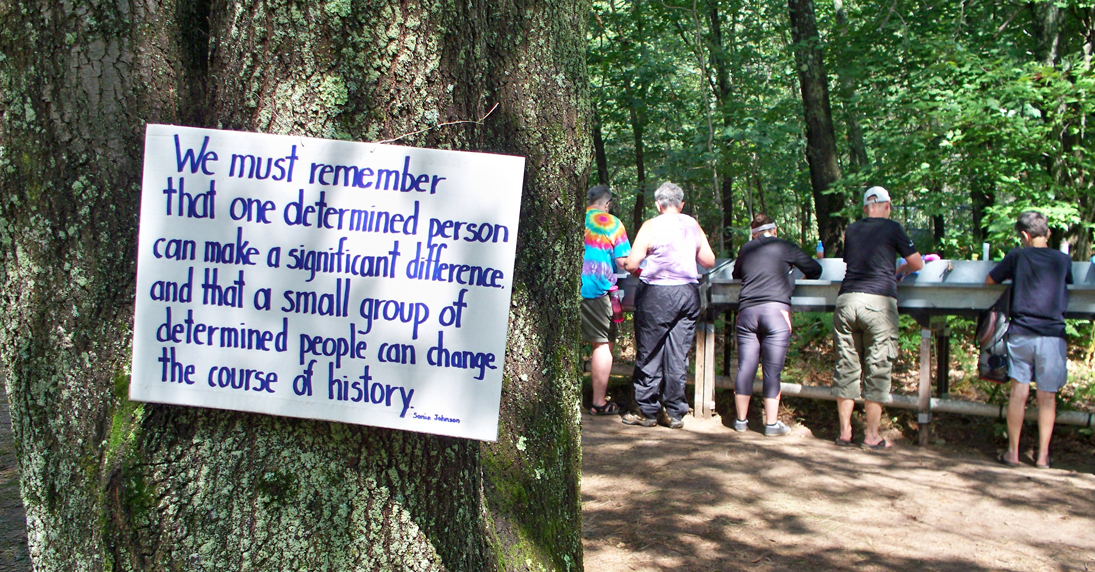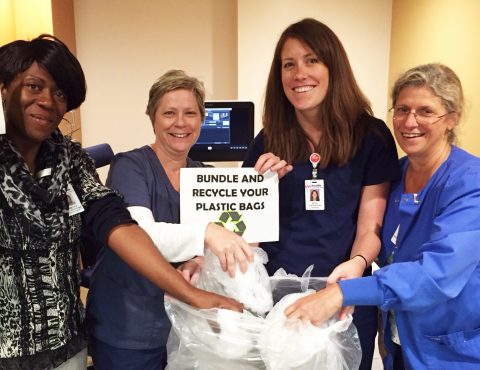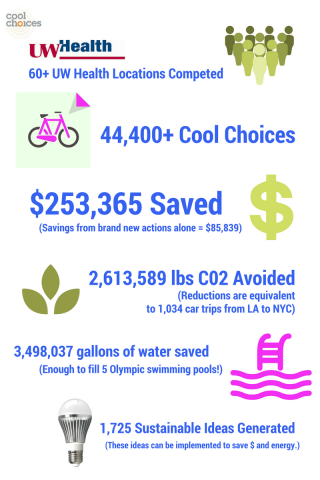Tag: Habits
Sustainable Practices that Add Up

We often assert that small sustainable practices add up. So what are some specific examples? Honestly, the examples are everywhere!
Beyond the Game: Making Daily Sustainable Habits a Way of Life

To highlight the cool things our alums do after taking part in the Cool Choices online sustainability program, we love to share stories from past participants. Our alumni always impress us by taking sustainable practices to the next level. Sara inspired us with her desire to make small, daily sustainable habits a way of life.
Healthcare Employees at UW Health Boost Sustainability & Wellness Efforts
We extend our congratulations to UW Health employees on completing their customized Cool Choices employee engagement program!
Check out how employees boosted sustainability efforts at UW Health!
- Nearly 180 teams of employees from UW Health participated in the Cool Choices sustainability and wellness program.
- Over 60 UW Health locations competed. They formed teams of 5 to log their sustainable actions online every day for 8 weeks.
- UW Health participants worked together to take more than 44,400 sustainable actions that save money and help the environment.
In their game, UW Health employees achieved estimated savings of $253,365. The participants logged actions that will save 3,498,037 gallons (5 Olympic sized swimming pools) of water annually and avoid 2,613,589 lbs (1,034 car trips from LA to NYC) of CO2.
During the game UW Health employees shared 1,725 sustainable ideas. These suggestions can be implemented to save money and energy.
“By adopting sustainable practices UW Health employees save money at work and at home while improving their personal wellness and reducing environmental impacts,” noted Kathy Kuntz, Executive Director at Cool Choices.
Thanks UW Health employees, your engagement and dedication are very inspiring!
An Easy Bike Ride
A mantra here at Cool Choices is that change works best when it is fun, social and easy and we work hard to make sure our initiatives meet all three criteria.
Lately there have been a number of stories about efforts to encourage biking that reinforce the importance of ‘easy’.
Change is easy when there are not big barriers looming in the distance. When it comes to biking, folks have traditionally identified multiple barriers:
- Nowhere to store my bike at work
- No showers at work, which means if I get to work sweaty I will stay that way
- Biking looks dangerous—have you seen those guys in traffic?
- My commute is too long to consider biking
Over the last few years there have been tremendous effort to address these barriers.
Communities are tackling the last issue, for example, by accommodating bikes on public transit systems—so that people can overcome longer distances with a combination of biking and transit. By 2008, 71% of public transit buses in the US had bike racks.
And thanks, perhaps, to the emphasis on transportation in the LEED® rating system. Because of LEED, more and more buildings feature showers and bike parking. After all, employers see multiple advantages to encouraging employees to bike to work since biking reduces both pressure on automobile parking lots and the company’s overall carbon footprint while contributing favorably to employee wellness.
Increasingly, then, the barriers to biking come down to the issue of biker safety. In some areas—both urban and rural—biking feels pretty dangerous, especially to the inexperienced biker. Many of us cannot imagine zipping in and out of traffic the way bike messengers do in the movies. Which is why we were so excited to see a number of cities implement measures that make biking safer for the rest of us.
Chicago, Washington, D.C., Memphis, Austin, San Francisco and Portland, Oregon, have implemented a Green Lane Project that creates special bicycle lanes—separated from automobile traffic by physical barriers. Observers say the programs are working. The lanes are drawing a diverse set of bikers, many of whom might have been previously nervous about biking these urban streets. Similar efforts in London have led to a 70% increase in bike traffic.
Many cities are finding that more bikers also means fewer bike-related accidents. Experts explain that when automobile drivers expect to share the road with bikers their car driving habits change and there are fewer car-bike accidents. So biking doesn’t just feel safer, it really is safer.
Change happens most readily when it is fun, social and easy. And relative to biking, the changes are getting easier all the time.



